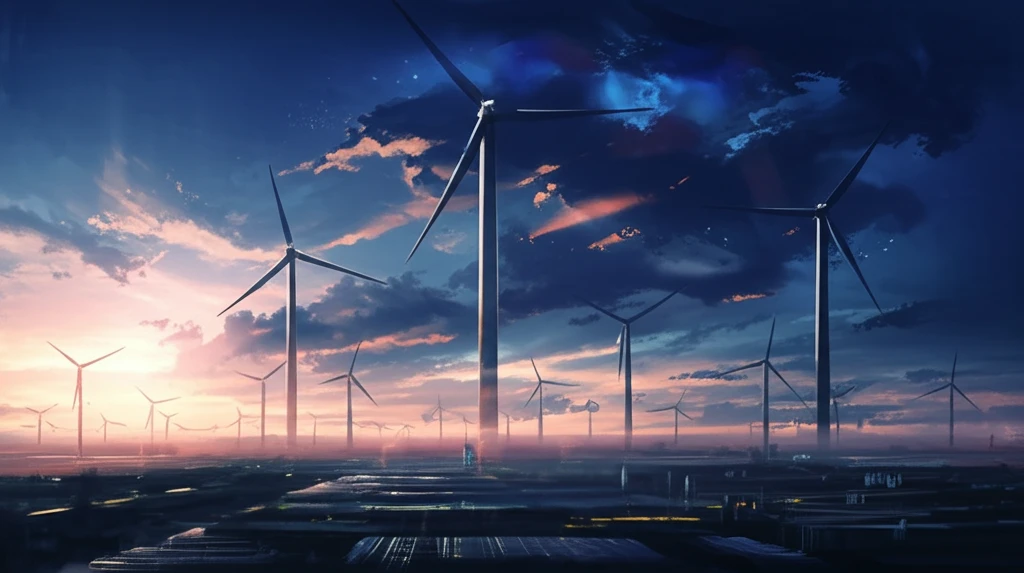
Wind Farms: The Future of Green Energy or an Environmental Concern?
"Unlocking the Secrets of Wind Farm Efficiency: How strategic design and placement can maximize energy output while minimizing ecological impact."
Wind energy is at the forefront of the renewable energy revolution, with wind farms popping up across landscapes and seascapes. As these installations grow in size and number, it's becoming increasingly important to understand how they interact with the environment. This isn't just about generating clean energy; it's about ensuring that we do so in a way that minimizes disruption to local ecosystems and atmospheric processes.
Numerical weather prediction models need to accurately represent these large wind-turbine arrays, not only for wind-farm optimization but also for environmental assessment. Accurately predicting how wind farms affect local weather patterns, energy extraction, and air-water exchanges is crucial. To address this need, researchers are developing sophisticated models that can capture the complex dynamics of wind farms.
This article delves into an analytical model designed to optimize the performance and placement of wind farms. By understanding the factors that influence wind flow and energy extraction, we can design wind farms that maximize energy output while minimizing environmental impact. Let's explore how this model works and its potential to shape the future of wind energy.
Decoding the Science: How This Model Optimizes Wind Farm Design

The study introduces a refined model that simplifies the complex interactions within wind-turbine arrays, focusing on what the authors term “sparsely-obstructed shear flows.” Imagine wind moving through a forest; instead of dense trees, think of strategically placed turbines. The model focuses on the vertical distribution of wind speed and shear stress, which helps in estimating how much kinetic energy is harvested from the atmospheric boundary layer.
- Turbine Geometry and Spacing: How the size and arrangement of turbines affect airflow.
- Performance Characteristics: Understanding how turbines perform under different wind conditions.
- Atmospheric Boundary Layer: Examining the layer of air directly influenced by the earth's surface.
- Kinetic Energy Harvesting: Calculating how much energy is captured by the turbines.
Wind Farms and Beyond: Toward a Sustainable Energy Future
The analytical model offers a promising path toward optimizing wind-farm design for maximum energy extraction with minimal environmental impact. As wind energy continues to expand, the insights from this model can guide the development of sustainable practices, balancing our energy needs with ecological stewardship. By understanding and addressing the complexities of wind-farm dynamics, we can pave the way for a greener, more sustainable future.
